WATER SMART LANDSCAPING: BEST PRACTICES
by Cassidy Mantor
Last season we began a discussion of Water in the West, an objective look at how we manage the West’s most valuable natural resource. We studied water-tracking resources ranging from the U.S. Drought Monitor to more localized water-smart programs in our community and concluded that with minor modifications to our home systems and landscaping, we can have a great impact on the overall health of our environment. Now, with warmer months approaching and peak water use on the rise, we are delighted to bring you a second installment of the discussion, this time with local experts weighing in. Our hope is that after reading these pages, you will feel empowered to make one or two of the small changes our experts suggest, making your dream home that much more sustainable for generations to come.
WHJ is devoted to facilitating meaningful connections that strengthen our built landscape and enhance our greater community. As more people make the mountain lifestyle theirs, we believe it is our responsibility to educate as well as provide inspiration. As part of our ongoing look at water in the West, WHJ spoke with water use experts and compiled a list of the top five best practices for smart landscaping that will lead to sustainable living. We hope these points help get you started.
1.Start with a Survey
The survey helps develop an understanding of each site specifically in both the regional and micro-climate context. Is there bedrock? Is there surface water or groundwater? Does your neighbor have a spring that would only be discovered once you’ve dug into your foundation? Knowing the topography of soils helps build an understanding of the micro elements of the site.
2.Proper Site Planning & Landscape Design
Soil is diverse in Utah. It can range from sandy loam that drains water so that it disappears to clay that holds the water and creates issues for plant growth, to bedrock where we have to import soil. Landscaping strategies may consider surface water flow and how much water plant and root structures will use on the site. Some properties have surface water flow that can be integrated into the actual design either as a water feature or to retain water to help recharge a surface or subsurface soils on the site.
3.Minimizing Impact to Native Vegetation
Ethical landscape design attempts to minimize impact to native vegetation and – for places that have been disturbed – planting native materials that over time will not need irrigation beyond natural rainfall. The native understory of a forest might not look like the traditional green lawn we’ve been trained to appreciate, but the reality is that the root structure offers immense benefits to the environment, both the soil and the wildlife. If we remove it, it forces us to ask where will the rainfall go? Will water run downhill to your neighbor? Design often necessitates a layered approach and unless there is a specific intended use for flat turf such as a soccer field, putting green, or play area for the kids or grandkids, why not make it a native grass area? Beyond water, what you plant can reduce how much fertilizer and ongoing mowing and maintenance is needed.
4.Finish Surface Treatments
Mulch and planter beds hold in moisture. A shredded cedar mulch is a strong weed deterrent. Landscape design programs may involve a combination of soil, plants, and the water it takes to sustain the plants. Instead of spraying overhead water, which is inefficient and also leads to weeds, drip irrigation can direct water to each plant. Partnering with a landscape architect means you can easily create a healthy environment from both the vegetation standpoint and also how much maintenance is required to sustain it.
5.Plan Early
Proper planning combined with education on both budgetary and environmental considerations leads to the most successful designs. When you’re building a home, having a landscape architect on board early in the design process to work with the architect is important because they can share their knowledge to help make the best design for the site and that frequently saves money and time down the road. Design elements to consider are locations where a lush site full of native plants is appropriate, and where to develop focal points with high-impact perennial beds in main outdoor living spaces. It’s a matter of redesigning a space to get everything on your wish list and also applying best practices to ensure that the environment you’re building will thrive from a long-term practicality standpoint.
Seth Bockholt LA:
“As a landscape architect practicing in Utah, the second driest state in the nation, water conservation is an important aspect of every project we design.”
–Seth Bockholt, PLA, ASLA, GRP, Landscape Architect, Founder & Principal, Seth Bockholt LA
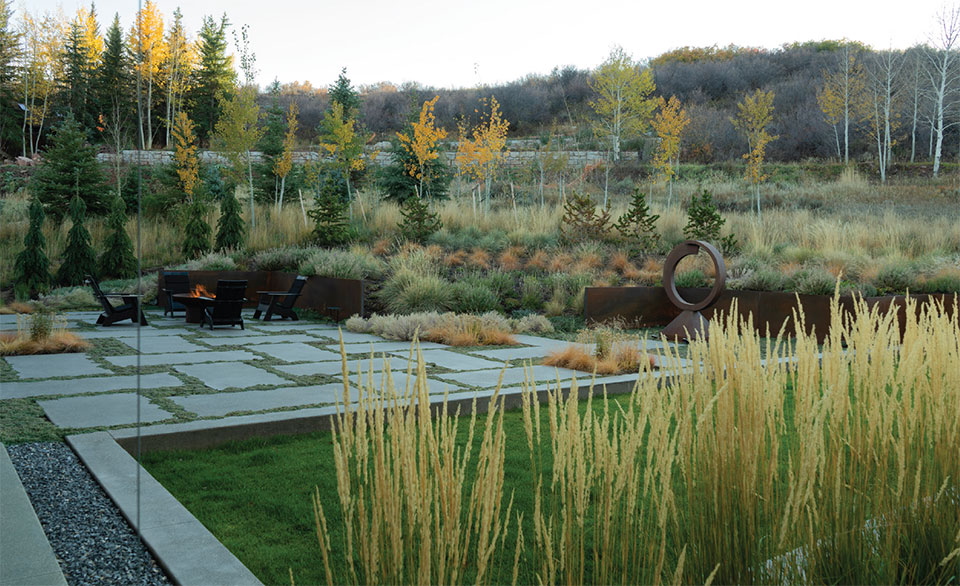
Founded in Park City in 2012, Bockholt Inc. transforms landscapes from tangles to tapestry. Their designs grow into beautiful self-sustaining ecosystems that mimic the natural landscape of the ecoregion. Their work promotes a symbiotic relationship between each plant community, the surrounding wildlife, and us. Bockholt encourages clients to think of their homes and landscapes as ideal habitats, respectfully designed to fit into their places and conserving precious resources for all to share.
“As a landscape architect practicing in Utah, the second driest state in the nation, water conservation is an important aspect of every project we design,” says Seth Bockholt, PLA, ASLA, GRP, Founder and Principal Landscape Architect. Bockholt’s main considerations for designing a water-efficient landscape are:
+ Using native & drought-tolerant plant palettes
+ Minimizing high water-use species like lawns
+ Efficient irrigation including rainwater harvesting and a site-specific strategy for utilizing stormwater and snowmelt to supplement the landscape’s water requirements
+ Enhancing vegetative coverage
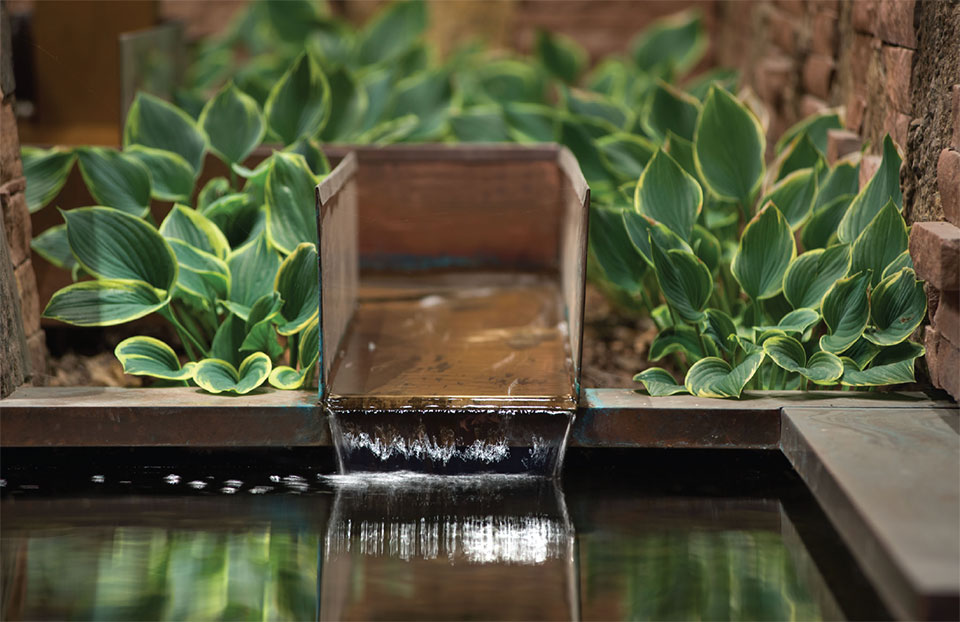
Using Native Plant Palettes
“Using these plantings should never mean parched-looking landscapes covered in rock,” Bockholt says. They work with site-specific exposure and microclimate conditions. For example, shady and wet areas – such as a rain garden – are supplemented with water from the roof on the north side of a home beneath the deck.
Minimizing Lawns
Lawns involve species with some of the highest water use. “We encourage our clients to plant water-wise lawns using native grasses like Tall-Fescue and Buffalo-Grass in lieu of Kentucky-Bluegrass,” shares Bockholt. Creative landscape designs can also reduce the amount of lawn and scale them appropriately for efficient irrigation. Bockholt explains, “We’ve graded lawns to be low spots that act as scenic detention basins. The lawn’s water requirements can be supplemented by stormwater runoff from the adjacent hardscapes and gutters from the roof.”
Site-Specific Irrigation
Rainwater harvesting is often thought of as diverting and storing precipitation to supplement irrigation for landscape plantings. Bockholt frequently does this, especially in Old Town where a site-specific plan can create a surplus of water for the summer months. The firm also creates systems that collect rainwater from the roof and convey it through gutters to fill a cistern for use in water features. Bockholt shares, “A recycling water feature like this essentially uses zero additional water.”
Enhancing Vegetative Coverage
Trees and larger plants provide shade and help reduce the temperature of the soil. “Shade reduces the rate of evaporation allowing water to stay in the soil longer,” Bockholt explains. He adds, “Plant roots also help bind soil particles together, creating a more stable environment that better retains moisture.” Roots help absorb water from the surface preventing runoff and promoting infiltration, allowing water to penetrate deeper into the ground, replenishing groundwater supplies, and reducing the need for irrigation.
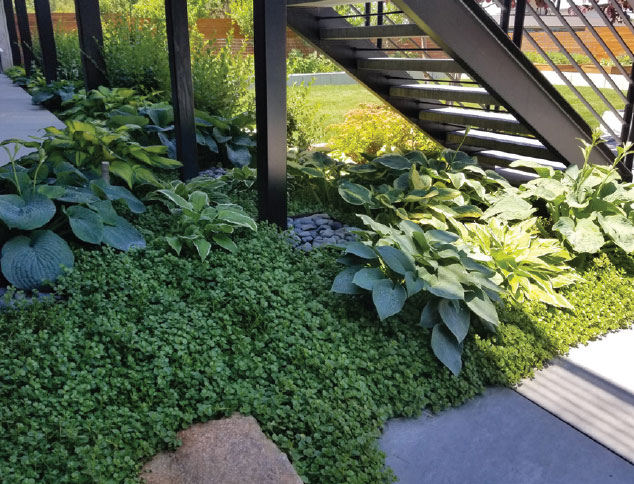
Transpiration (how plants release water vapor) and erosion control are two additional considerations when adding vegetative coverage. Transpiration cools the surrounding air and creates a microclimate more conducive to retaining moisture. Reducing erosion stabilizes the soil so plants keep more water-holding topsoil. Overall vegetative coverage acts as a natural water-saving mechanism that ultimately leads to lower water usage in landscapes.
“We want to change what you imagine when you close your eyes and think of a low water-use landscape,” Bockholt says. “Often people think of a landscape covered in rock with one or two plants struggling to survive.” With Bockholt, an appropriately designed xeric landscape is comparatively lush.
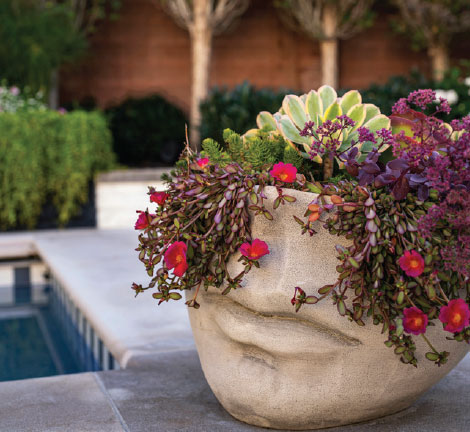
Sunline Landscapes:
Sunline Landscapes crafts unique and inspiring luxury outdoor spaces that connect people with each other in nature. Founded in 2002, Sunline grew from the dream of creating a landscape firm unlike any other in Utah. Today, Sunline is a full-service residential landscape company focusing on visionary, flawlessly executed natural designs that complement and enhance each client’s property. In addition to being seven-time “Best of Show” winners in the Utah Parade of Homes, Sunline pushes the boundaries of outdoor living and offers white-glove property care after the project is finished.
At its core, Sunline is committed to integrating water conservation principles into landscaping practices to promote sustainability and environmental stewardship. Sunline’s approach reflects a commitment to the environment and a dedication to creating landscapes that are beautiful, resilient, and intentional. Curtis Atkinson, owner and CEO of Sunline Landscapes, shares, “We recognize the importance of responsible water usage in preserving natural resources and mitigating environmental impact.” Accordingly, Sunline’s designers and craftspeople work with clients to incorporate best practices into a landscaping program that is sustainable for both the environment and the homeowner.
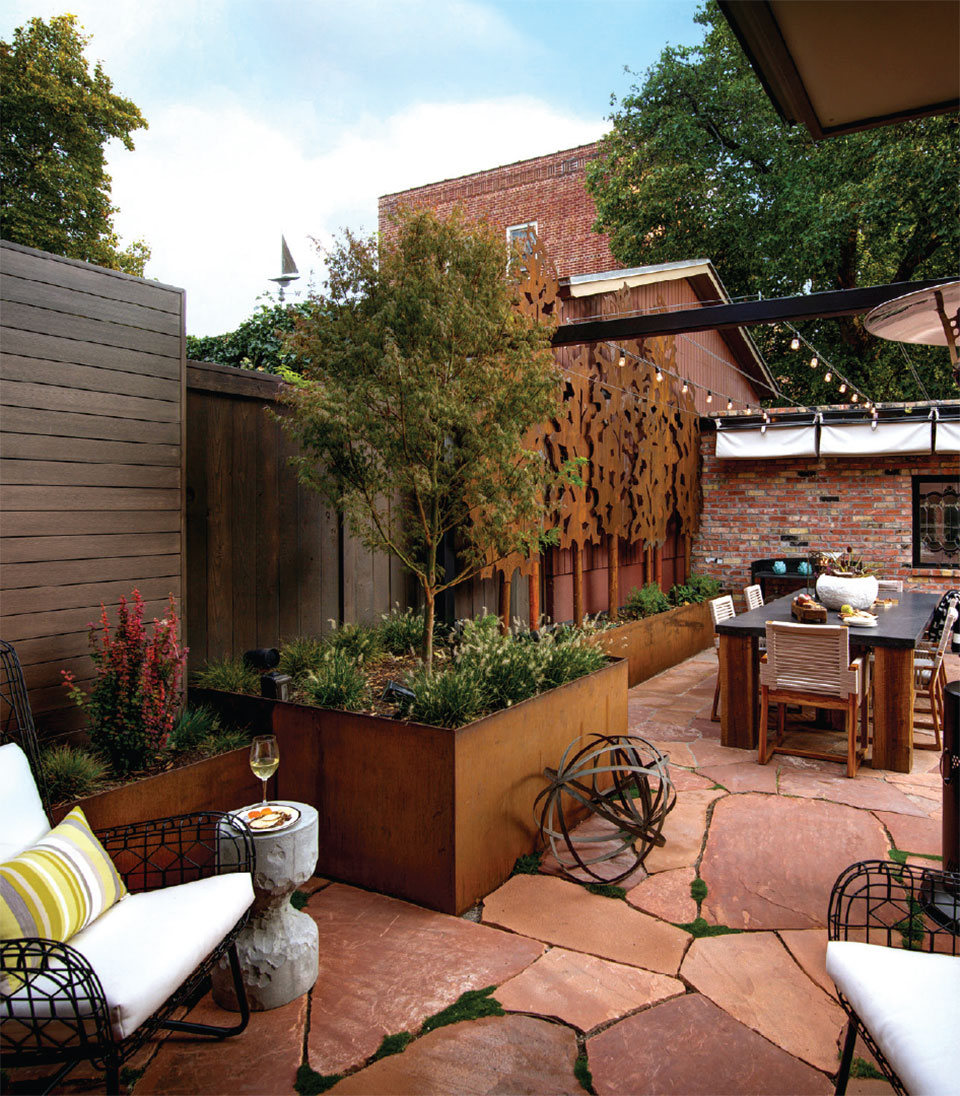
Sunline’s top three tips for how to approach water conservation:
Drought-Tolerant Selections:
These plants require less water to thrive, reducing overall water consumption while maintaining visual appeal and biodiversity. Curtis says, “We prioritize the use of drought-tolerant and native plant species in our landscape designs whenever possible.”
Efficient Irrigation Systems:
These systems deliver water directly to the plant roots, reducing evaporation and runoff. Curtis explains, “We design and install efficiently engineered irrigation systems, such as drip irrigation and smart controllers, to optimize water usage and minimize wastage.”
Continuous Improvement:
Through research, training, and collaboration, there are ongoing opportunities to incorporate the latest innovations and best practices in water conservation. Curtis shares, “We constantly evaluate and refine our landscaping practices, always striving to enhance our ability to design and implement sustainable landscapes that minimize water usage without compromising aesthetics or functionality.”
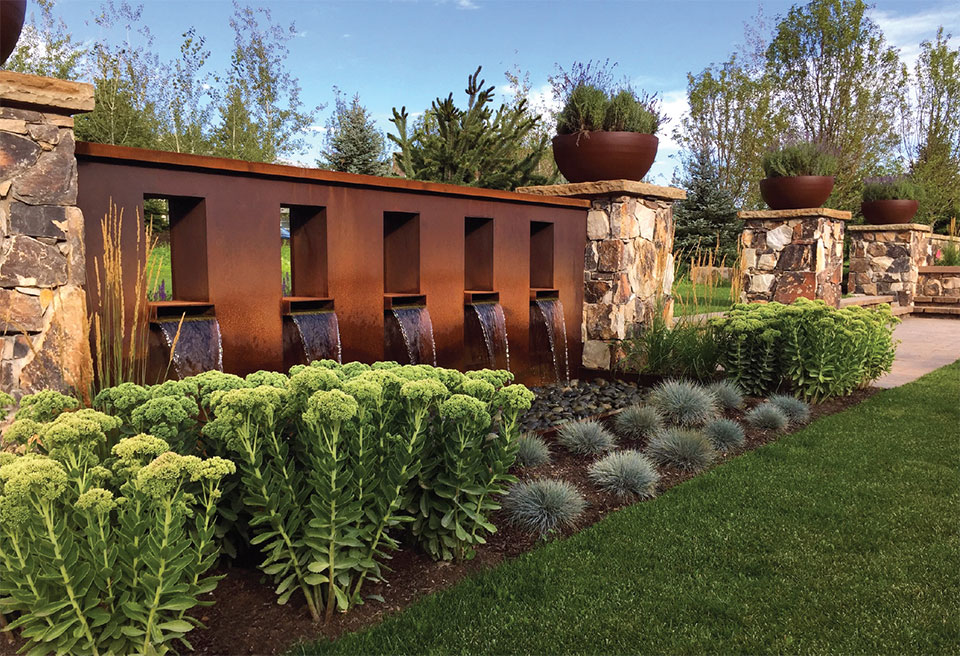
This three-pronged approach is vital for water conservation because it significantly reduces water usage in landscaping – a major contributor to residential water consumption. By selecting drought-tolerant and native plants that require less water to thrive and implementing efficient irrigation systems that minimize waste, Sunline helps conserve water resources and mitigates the strain on local water supplies, particularly during droughts. The firm emphasizes continuous improvement because it ensures that landscaping practices remain sustainable and adaptable to changing environmental conditions, further supporting long-term water conservation efforts. Overall, prioritizing these features not only promotes environmental sustainability but also helps homeowners save money on water bills while maintaining beautiful landscapes.
Sunline Landscapes is passionate about helping its clients make water-smart choices for their landscapes. Beyond just saving water, these choices can lead to vibrant, resilient gardens that thrive in any conditions. Clients working with Sunline can expect personalized white-glove service, innovative solutions, and ongoing support to create sustainable outdoor spaces that reflect their vision while minimizing environmental impact.
“We recognize the importance of responsible water usage in preserving natural resources and mitigating environmental impact.”
–Curtis Atkinson, Owner & CEO, Sunline Landscapes
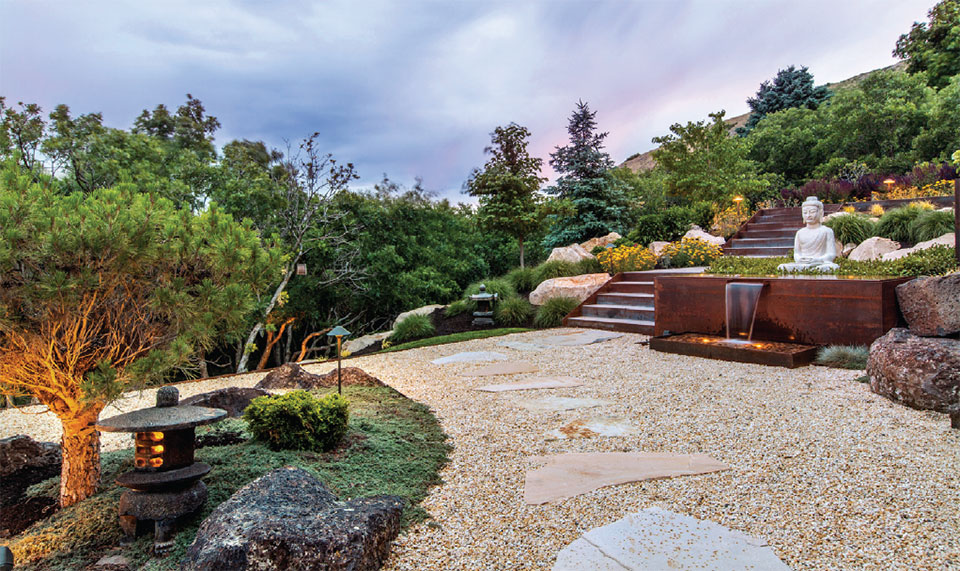
Eschenfelder Landscaping:
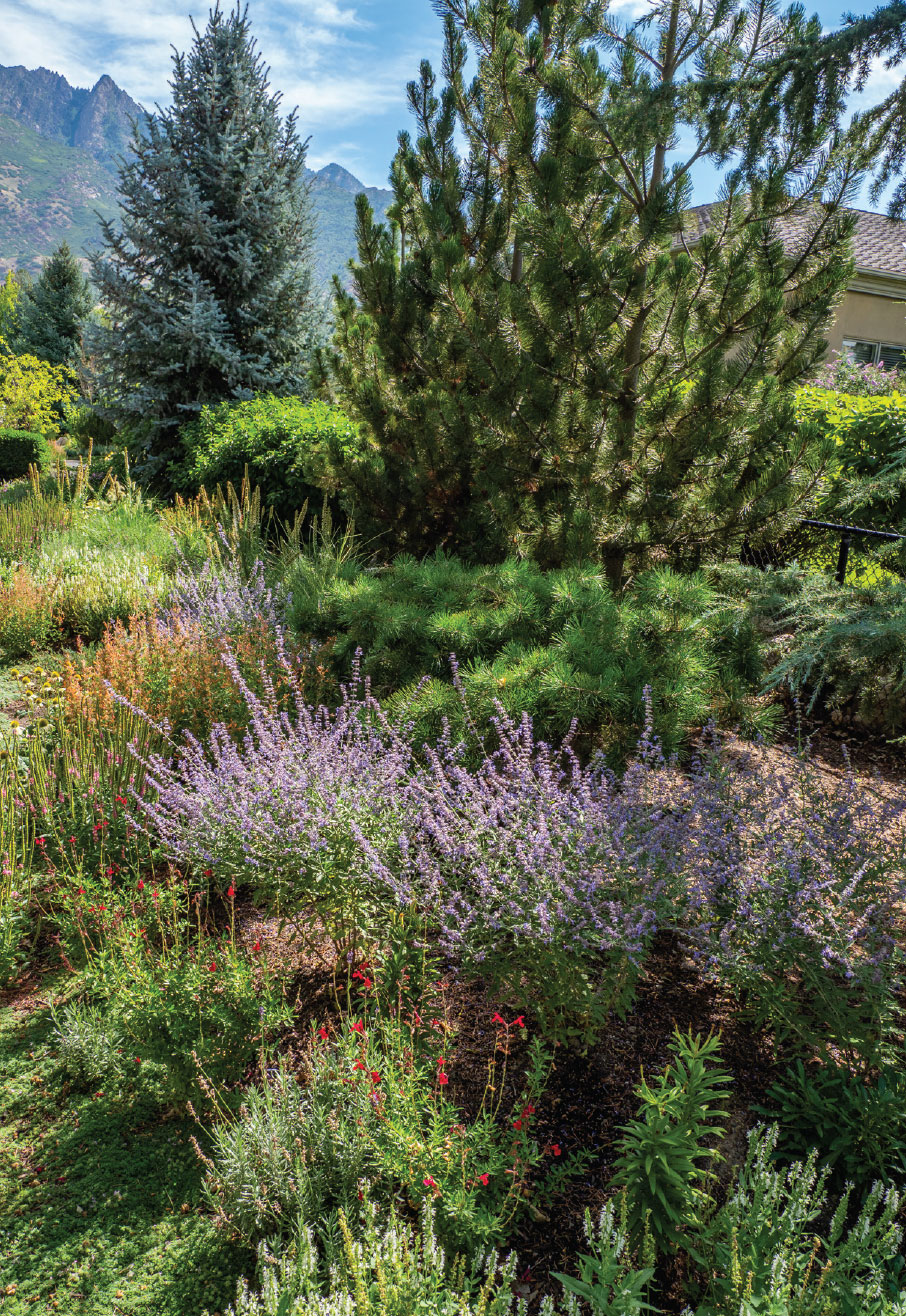
“They had no use for grass and we needed a grade change to break up the ¾-acre of flat lawn. We dug a canyon in the middle of the yard, lined it with earth-toned boulders, and planted it with a variety of water-wise perennials, ground cover, and some dwarf evergreens.”
–Willie Eschenfelder, Owner & Contractor, Eschenfelder Landscaping
From hardscaping to annual planting, Eschenfelder Landscaping has extensive experience in selecting the right plants and materials for every project. They are a local family-run business that has built its reputation in the community based on precision and quality. They have a combined 50 years of experience customizing irrigation systems and consider sprinklers the pulse of the landscape. They source the highest quality soil and native plants with intention, focusing on the color, texture, and growth potential of each plant. Their landscaping services include pavers and masonry, designer patios, and snow removal. A recent project for clients on a ¾-acre lot best illustrates their approach to creating sustainable living spaces.
Meadow Conversions: Less Grass
Meadow conversions involve taking existing grass areas and letting the grass go, stopping water, and then seeding or planting drought-tolerant plants in the areas they convert. In this instance, Eschenfelder took a meadow conversion to the extreme for a couple’s new home. “They had no use for grass and we needed a grade change to break up the ¾-acre of flat lawn,” says owner/contractor Willie Eschenfelder. “We dug a canyon in the middle of the yard, lined it with earth-toned boulders, and planted it with a variety of water-wise perennials, ground cover, and some dwarf evergreens.” They also removed the grass against the house and planted a new perennial cutting garden with a drip grid to ensure efficient and even watering.
Creating Interest: A Mini Botanical Garden
Eschenfelder tries to create multi-season gardens that have year-round interest. Evergreens add dimension in the winter while spring plants, summer perennials, and fall colors mean something is always happening in the garden. Another key feature of this project was the canyon. Eschenfelder shares, “The canyon made it so the clients could go on a hike in their own backyard. It feels like a mini botanical garden.” Finally, the new yard significantly cut water use compared to the old grass lawn. The soil on the site was very sandy, and so Eschenfelder’s team screened it to remove all the rocks and reused it. They installed a drip grid system (compared to a point source) that allows the flexibility to add more plants anytime they want to change things or fill in a space.
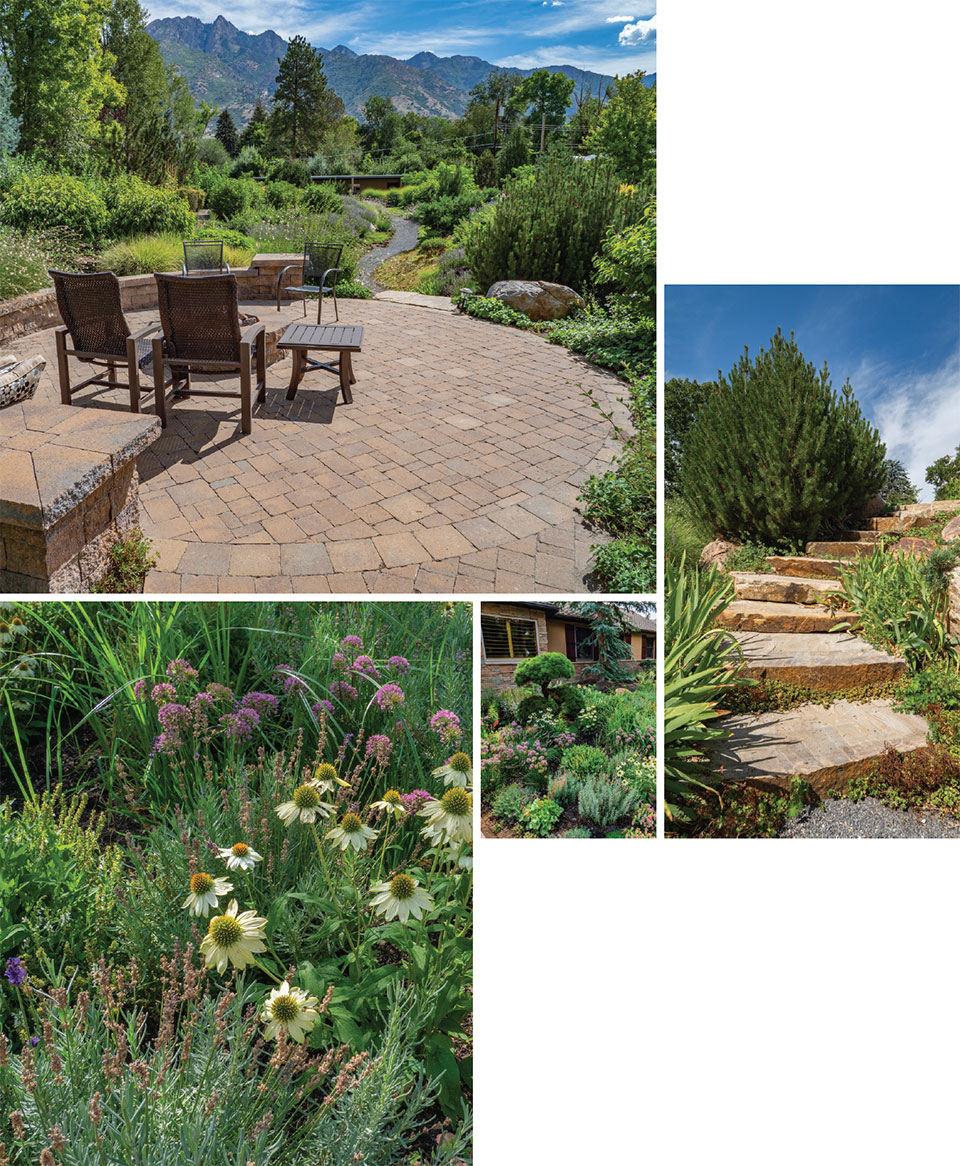
“We don’t believe everyone has to get rid of their grass, just that there is a time and a place for it.”
–Willie Eschenfelder, Owner & Contractor, Eschenfelder Landscaping
Smart Irrigation: Sprinklers
Eschenfelder is serious about smart irrigation. They only install systems with smart clocks, flow sensors, and master valves. The smart clocks monitor water use, email them if there is a leak, and can shut off the system if the weather changes and makes watering unnecessary. “Technology is going to be a very important part of helping save water and making our landscapes more efficient,” Eschenfelder says. “We love the opportunity to think outside of the box and design amazing landscapes.”
Non-functional grass and unwanted lawns use a lot of water. As Eschenfelder points out, if we are working to save water, then removing lawns, using drought-tolerant plants, and installing the most efficient sprinklers possible are all going to be a part of the equation. He says, “We don’t believe everyone has to get rid of their grass, just that there is a time and a place for it, and many spaces from side yards to park strips and commercial buildings can be made better without it.”
